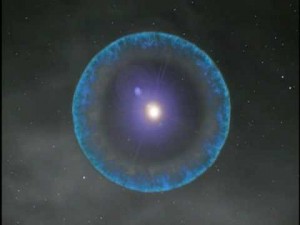Etheric.com eShop!
Cart
Search
Other sites of Interest
Evidence of a Subatomic Turing Wave Pattern
by Paul LaViolette Ph.d.
International Journal of General Systems, Volume 37 Issue 6, December 2008, pp. 649 - 676
Author Posting. (c) Taylor & Francis, 2008.
This is the author's version of the work. It is posted here by permission of Taylor & Francis for personal use, not for redistribution.
International Journal of General Systems, Volume 37 Issue 6, December 2008, pp. 649 - 676
Author Posting. (c) Taylor & Francis, 2008.
This is the author's version of the work. It is posted here by permission of Taylor & Francis for personal use, not for redistribution.
The Electric Charge and Magnetization Distribution of the Nucleon: Evidence of a Subatomic Turing Wave Pattern
P. A. LaViolette, International Journal of General Systems, 37 (2008): 649 – 676
Abstract
Subquantum Kinetics, a physics methodology that applies general systems theoretic concepts to the field of microphysics has gained the status of being a viable unified field theory. Earlier publications of this theory had proposed that a subatomic particle should consist of an electrostatic field that has the form of a radial Turing wave pattern whose form is maintained through the ongoing activity of a nonlinear reaction-diffusion medium that fills all space. This subatomic Turing wave prediction now finds confirmation in recent nucleon scattering form factor data which show that the nucleon core has a Gaussian charge density distribution with a peripheral periodicity whose wavelength approximates the particle’s Compton wavelength and which declines in amplitude with increasing radial distance. The subquantum kinetics explanation for the origin of charge correctly anticipates the observation that the proton’s charge density wave pattern is positively biased while the neutron’s is not. The phenomenon of beta decay is interpreted as the onset of a secondary bifurcation leading from the uncharged neutron solution to the charged proton solution. The Turing wave dissipative structure prediction is able to account in a unitary fashion for nuclear binding, particle diffraction, and electron orbital quantization. The wave packet model is shown to be fundamentally flawed implying that quantum mechanics does not realistically represent the microphysical world. This new conception points to the possible existence of orbital energy states below the Balmer ground state whose transitions may be tapped as a new source of energy.
This is the author’s version of the work. It is posted here by permission of Taylor & Francis for personal use, not for redistribution. The definitive version was published in International Journal of General Systems, Volume 37 Issue 6, December 2008, pp. 649 – 676.
To purchase published article: (https://dx.doi.org/10.1080/03081070802367457)
nucleon.pdf (File size: 1.4 MB)
Copyright 2007, P. LaViolette
This paper describes the confirmation of a key prediction of subquantum kinetics, that subatomic particles may be represented by a periodic core field pattern having a wavelength approximating the particle’s Compton wavelength. The electric potential profile that subquantum kinetics predicted closely matches the profile that was deduced from fits to particle scattering form factor data for the nucleon; see Prediction No. 1 of Predictions Part II.
This paper is dedicated to the memory of my father, Fred G. LaViolette (1916 – 2008)
I would like to share with you the following email my father sent me in 2005 after reading an early draft of the paper that I was submitting for journal publication:
Subj: Form factor paper
Date: Sunday, June 12, 2005 2:58:53 PM
From: FGLav
To: Lavstar
My dear son,
I am overwhelmed with admiration for your signal paper showing how Subquantum Kinetics accurately predicted the results of J. Kelly’s form factor experiments and provides a complete basis for explaining problems in physical science that have accumulated for more than a century with no successful encompassing theory.
Subquantum Kinetics is, without a doubt, the unified field theory for which Einstein searched unsuccessfully for many years. It provides a new foundation for the elucidation of quantum mechanics and may well replace the entire fabric of Relativity theory. It provides a new basis for understanding nuclear reactions and nuclear reaction cross-sections (really a whole new branch of nuclear science). It provides a connecting fabric for all the important observations in experimental physics since the time of Faraday and Maxwell. Furthermore the theory of SQK contains within its reaction kinetic equations the possible means for establishing the characteristics of the etheron particles themselves.
You know that I have been convinced of most of the above for many years. But this paper makes such a resounding proof of the great significance of SQK that it can no longer be ignored.
CONGRATULATIONS,
Fred G. LaViolette
As you see Fred was a very enthusiastic supporter of my work, and it was encouraging words like this that helped me get through the many discouraging periods that one goes through in attempting to get a novel theory published and accepted by his science peers. Words cannot express how much I miss him. A tribute that recounts the important role he played in the course of my development of the theory is posted here.
